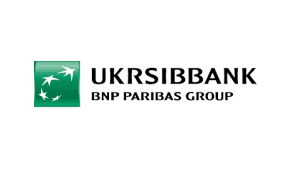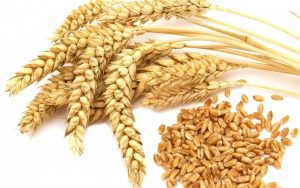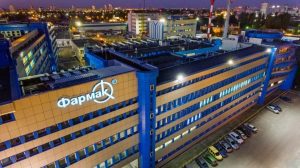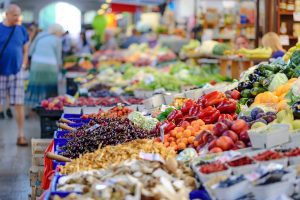
The net profit of Ukreximbank (Kyiv) in 2019 amounted to UAH 63.62 million, which is 13.4 times less than in 2018 (UAH 852.30 million), according to the bank’s report on the website.
According to the report, in the fourth quarter of 2019, the net loss of Ukreximbank amounted to UAH 2.21 billion, while in 2018 the bank declared a profit of UAH 146.06 million for this period.
One of the reasons for the decrease in profit in 2019 was a decrease in the bank’s interest income by 7%, to UAH 1.77 billion, which is associated with a decrease in the loan portfolio by 3%, to UAH 7.24 billion and the securities portfolio by 14%, to UAH 3.57 billion.
In terms of non-interest income, there was an increase in net commission income by 4%, to UAH 652.24 million. This partially offset the decrease in other incomes by almost 2 times, to UAH 105.09 million, due to a lack of one-time and irregular receipts.
In addition, the loss in the fourth quarter of last year and the decrease in profit in general for 2019 are explained by an increase in expected credit losses to UAH 3.039 billion from UAH 1.14 billion for three quarters, while in 2018 the bank, on the contrary, received an additional UAH 1.64 billion.
The bank’s assets in 2019 decreased by 13.2%, to UAH 140.34 billion, in particular loans to customers by 26.5%, to UAH 53.28 billion.
The bank’s liabilities decreased by 14.2%, to UAH 131.43 billion, in particular, debt to customers by 6.1%, to UAH 77.13 billion.
Ukreximbank’s net worth for 2019 rose by 5.5%, to UAH 8.90 billion.
The charter capital of the bank remained at the level of UAH 38.73 billion.

The cost of agricultural production in Ukraine in January-March 2020 decreased by 7.3% compared to the same period in 2019. According to the State Statistics Service, the cost of crop production in the first quarter decreased by 8.3%, livestock products by 6.6%, material and technical resources of industrial origin used in agriculture by 9.8%.
At the same time, according to the service, the cost of agricultural production in March increased by 0.6% compared to the previous month. Thus, the cost of crop production rose by 0.1%, livestock products by 0.2%, but at the same time, the cost of material and technical resources decreased by 1.3%.
As reported, the cost of agricultural production in Ukraine in 2019 decreased by 0.64% compared to 2018.

PJSC Farmak, a Ukrainian pharmaceutical manufacturer, in 2019 received a net profit of about UAH 1.056 billion, which almost coincides with the indicator of 2018 (UAH 1.05 billion), the company said in the information disclosure system of the National Securities and Stock Market Commission.
Earlier it was reported that the company’s assets for the year increased by 12.3%, to UAH 6.657 billion.
The company plans to pay UAH 100 million in dividends.
In 2018, Farmak increased its net profit by 25.16% compared to 2017, to UAH 1.05 billion.
Farmak is a manufacturer of medicines of the European level, a leader in the pharmaceutical market of Ukraine in terms of sales. It exports products to 20 countries. It is a member of the Manufacturers of Medications of Ukraine association.
According to the state register, the ultimate beneficial owner of PJSC Farmak is the head of the supervisory board, Filia Zhebrovska, who owns 80% of the company.

The Kyivstar mobile communications operator has connected another 496 Ukrainian settlements to the 4G communications network, increasing 4G coverage in 11 regions of Ukraine, the company said on Thursday. The operator, in particular, connected the villages of Chernelivka, Novoselytsia, Narkevychi in Khmelnytsky region; the villages of Borshevychi, Dobrostany, Bukova in Lviv region; Torchyn, Liubeshiv, Velymche in Volyn region; the villages of Viytivka, Sokolivka, Tereshky in Vinnytsia region and other settlements.
At present, the 4G Kyivstar network covers over 11,000 settlements, in which almost 79% of the population of Ukraine lives.
According to the company, since the launch of the 4G communications in April 2018, more than 10 million subscribers have already used the 4G services. Over the period, the volume of data traffic in the Kyivstar mobile network grew from 325 to 649 petabytes (PB).
As reported, Kyivstar in 2019 increased revenue by 19.6%, to UAH 22.392 billion, EBITDA by 39.4%, to UAH 14.683 billion. The number of mobile operator subscribers in the fourth quarter of 2019 decreased by 0.6% compared to the same period in 2018, to 26.2 million, while the number of fixed-line subscribers increased by 10.8%, to 1 million.
Kyivstar is the largest Ukrainian telecommunications operator. It provides communications and data transfer services based on a wide range of mobile and fixed technologies, including 3G. By the end of 2018, its services were used by about 26.4 million mobile subscribers and about 900,000 fixed Internet customers.

JSC Ukreximbank and the State Agency of Automobile Roads of Ukraine (Ukravtodor) with the participation of President of Ukraine Volodymyr Zelensky have signed an agreement to provide the first tranche for updating roads in Ukraine in the amount of UAH 5.782 billion from the amount of financing, which will total UAH 19.3 billion.
“Despite the quarantine measures in our country, the most important thing is that the state works and, together with the banking sector and construction companies, builds kilometers of roads and “sews” our country! As I said, roads, bridges are a priority,” Zelensky said after the signing of the agreement.
He emphasized that the Big Construction program is the image of Ukraine as a country with modern and high-quality roads on which you can travel. The president also noted that the program will contribute to the creation of new jobs.
The president’s press service notes that the attraction of funds from Ukreximbank under state guarantees by Ukravtodor became possible due to the adoption of laws on amendments to the budget that Zelensky signed on February 4, 2020, and thanks to the decision of the National Bank to lower the refinancing rate. The loan interest rate will be 10.5% per annum.
“We, as a state bank, support the Big Construction project. With the signing of the agreement, Ukravtodor will receive the first tranche in the amount of UAH 5.782 billion at a rate of 10.5% per annum, which is 2% lower than the Cabinet of Ministers foresaw,” chairman of the board of Ukreximbank Yevhen Metsger said.
He said that Ukreximbank is ready to become a financial partner of the Big Construction project and lend its shoulder to all companies, in particular contractors, that will be involved in the construction of the facilities under this program.
AGREEMENT, ROADS, TRANCHE, UKRAVTODOR, UKREXIMBANK, UPDATING

The opening of food markets is important for the economy, while the rest of businesses are planned to open after May 11, Health Minister of Ukraine Maksym Stepanov told a press briefing on Thursday.
“The opening of food markets is a very important step. The markets, which sell around 70% of agricultural products, are very important for the economy and prices for these products. We have found a way to open them and to avoid the spread of the coronavirus disease. As to the rest of businesses, we are planning to open them after May 11,” he said.